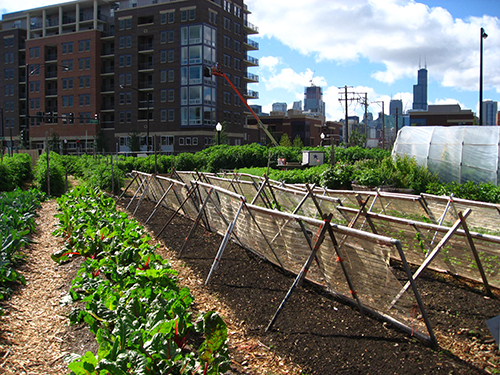Dec 28 2015 Building Healthy Communities in New York City requires commitment from across sectors
 At The Intersector Project, we often discuss the difficulties that can arise when individuals and organizations are working to tackle an issue from within a sector-specific silo — from within only government, business, or the non-profit sector, with the resources and expertise of one sector alone. It’s also important, however, to think about breaking through issue-specific silos — many of the complex problems we face today are linked and can’t be addressed on their own. The Building Healthy Communities initiative understands the value of bridging sectors and tackling inter-related issues as it works to improve community health in New York City.
At The Intersector Project, we often discuss the difficulties that can arise when individuals and organizations are working to tackle an issue from within a sector-specific silo — from within only government, business, or the non-profit sector, with the resources and expertise of one sector alone. It’s also important, however, to think about breaking through issue-specific silos — many of the complex problems we face today are linked and can’t be addressed on their own. The Building Healthy Communities initiative understands the value of bridging sectors and tackling inter-related issues as it works to improve community health in New York City.
The initiative’s mission is to improve community health in 12 high-poverty, densely populated neighborhoods across the five boroughs, but the organizations and agencies involved know that health reaches far beyond the provision of medical care. According to the initiative’s website, “many higher-poverty neighborhoods have historically been neglected from public investment in open spaces and playgrounds. These same communities often report high rates of crime and equally high rates of obesity and diabetes.” For example, the children of parents who report that they’re anxious about their neighborhood’s safety get less exercise. To address these intertwined problems, the initiative has three goals: to increase opportunities for physical activity, to increase access to nutritious and affordable food, and to promote safe public spaces.
“Building Healthy Communities offers another opportunity for the public and private sectors to team up — combining the scale of government with the flexibility of funding and speed of business and philanthropic players.”
To reach these goals, Building Healthy Communities brings together 11 City agencies — including the Department of Health and Mental Hygiene, the Housing Authority, and the Department of Transportation — with private and non-profit sector partners like Unilever and the Laurie M. Tisch Illumination Fund. As the initiative’s website explains, “Building Healthy Communities offers another opportunity for the public and private sectors to team up — combining the scale of government with the flexibility of funding and speed of business and philanthropic players.” In developing an awareness of the benefits that each sector brings to the collaboration, the initiative is accounting for resources. The process of evaluating resources allows partners to plan how their expertise, networks, and assets can be best utilized in the collaboration and to determine what additional resources may be needed.
Building Healthy Communities comprises several programs, one of which brings farms to communities with high levels of poverty, food insecurity, and diet-related diseases. “We are too familiar with the statistics in these areas,” explained Laurie M. Tisch and Rick Luftglass of the Laurie M. Tisch Illumination Fund in an article in Crain’s New York. “These issues are intertwined, and the only way to make headway is through comprehensive community strategies and collaboration across sectors.” The farm program will be implemented in five of the initiative’s 12 neighborhoods. The Illumination Fund has been involved in other collaborative community health programs including NYC Green Carts and the NYC Summer Meals program. The support of foundations can be crucial for cross-sector collaborations — According to Laurie and Rick, “funders that are willing to take smart risks can bridge gaps and act as catalysts for innovation.”
